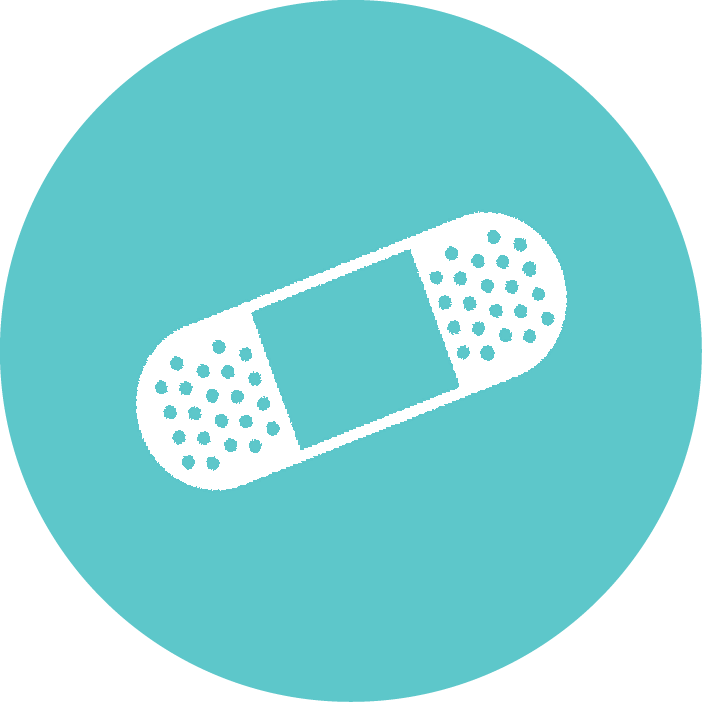You may have noticed that the last few years have seen a significant increase in the popularity of tattoos. The numbers don’t lie: In a 2012 Harris poll, 21% of Americans responded that they had one or more tattoos, up from just 14% in 2008.
But unlike most other fashion trends, tattooing has the potential to seriously affect the long-term health of your skin. So before you decide to get your new boyfriend or girlfriend’s name scrawled across your back (“I swear, mom, they’re the one!”), it’s important to learn about the preparation and care that will keep your new ink looking great for decades.
Preparing for a Tattoo
Aside from any aesthetic considerations – namely, taking the time to make sure you’ve picked a design you’ll be happy with thirty years from now – there are a few things to keep in mind when you’re getting ready to get a tattoo.
Choose the Tattooing Facility Carefully
Do your homework. Read customer reviews online, ask for recommendations from trusted friends, read up on your city, county, or state licensing regulations, and, most importantly, check out the tattoo parlor for yourself ahead of time. Make sure that the artists wash their hands and wear fresh gloves, use new, sealed needles and pigments, and heat-sterilize or disinfect all reusable equipment between customers. These techniques are necessary preventing infection, and any unsanitary conditions should be an immediate deal-breaker.
Consult Your Dermatologist About Ink Allergies
According to the American Academy of Dermatology, some tattooing pigments may contain industrial compounds that can cause discomfort, inflammation, or other allergic reactions. While reactions to these pigments are rare, your dermatologist can tell you more about your own skin sensitivities before you decide to get inked.
Tattoo Maintenance
To keep your tattoo looking great, it’s important to take care of it. Here are some tips to ensure that your pricey new work of art doesn’t become a pain in the dermis.
Keep the Tattooed Area Clean and Hydrated
Recently-tattooed skin is technically wounded, so it’s critical that you take steps to prevent infection and irritation. Apply an antibiotic ointment to the tattooed area regularly while it’s healing (your tattoo parlor or dermatologist can provide this for you), and make sure to clean the skin daily with plain soap and water. A mild moisturizer can also be used to prevent overly-dry skin.
Stay Out of the Sun
Exposure to UV light can irritate tattooed skin very easily. If possible, it’s best to keep your new tattoo covered up with clothing, but using a broad-spectrum sunblock is also an effective way to protect against irritation. And beyond discomfort, UV light can also cause tattoo inks to fade over time.
Avoid Swimming While Your Tattoo Heals
The Mayo Clinic advises against any form of swimming with a new tattoo. Pools, hot tubs, oceans, lakes, and other bodies of water are filled with bacteria and other pathogens that can easily cause skin infections, and chlorinated water can irritate the tattooed area even further. So even if you want to show off your new ink at the beach, stay out of the water until it’s done healing.
Ask a Dermatologist if you Notice Any Irritation
Even if you follow all of the precautions, new tattoos can still get infected and cause serious health problems. If you notice any inflammation, pain, or other discomfort, consult a dermatologist immediately. Using the First Derm app, you can send a picture of your symptoms to a dermatologist who will let you know if it’s an issue that needs urgent attention.
Tattoo Removal
Unfortunately, even the coolest tribal designs go out of style and the most star-crossed lovers break up. According to that same Harris poll, 14% of Americans with tattoos regret getting them altogether. If you suddenly find yourself stuck with a permanent, regrettable reminder of your youthful indiscretions, don’t worry. It’s not necessarily as permanent as you think.
Laser Tattoo Removal
Along with inks and pigments, the FDA also regulates the lasers that can be used for tattoo removal. This technology has been around for decades, and has proven safe in most cases. However, the American Society for Dermatological Surgery discourages tattoo removal in individuals with “certain autoimmune system disorders, pigmentation problems, active acne, warts, unstable diabetes, active rosacea or other undiagnosed lesions,” as it can exacerbate those issues.
Avoid Home Tattoo-Removal Kits
Ointments and creams available online or at your pharmacy are not regulated by the FDA, and in studies have shown little to no effectiveness when it comes to tattoo removal. Some may even cause significant irritation or permanent skin damage, so it’s best to avoid these and consult a professional.
Some Tattoos are Easier to Remove than Others
Simpler tattoo designs that use a small number of inks, especially black, dark blue, and dark green ones, tend to be much easier to remove completely. Pastel-colored inks have proven much more difficult to get rid of, so keep that in mind when choosing a design. Also, be aware that some tattoos may be impossible to remove completely, and even if they are you may run the risk of scarring or permanent skin discoloration.
Getting a tattoo is certainly not a risk-free undertaking, but following these guidelines can mean the difference between ending up with an unattractive, painful mess, or a work of art that will look fantastic for the rest of your life.
Other References:
http://www.dermalinstitute.com/ca/library/78_article_Tattoos_and_Skin_Health.htmlhttps://www.aad.org/skin-conditions/skin-health-tips/caring-for-tattooed-skinhttps://www.asds.net/DosAndDontsConsideringTattoosPiercings.aspxhttp://www.fda.gov/Cosmetics/ProductsIngredients/Products/ucm108530.htmhttp://www.nejm.org/doi/full/10.1056/NEJMp1206063




